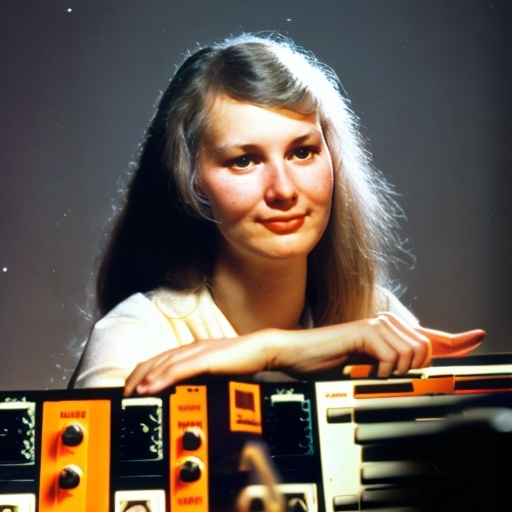Assignment Overview
3 projects
8 lab-assignments
1 Final Project
Assignments are designed to not only build your technical proficiency but also to foster your creative and critical thinking skills, setting you up for success in the world of music technology.

GET IN TOUCH
submit in brightspace
Submit your assignments in the correct format and location on the brightspace site. Late submissions will not be accepted if they are more than two weeks overdue. Ensure your file is exported/bounced as an mp3 and plays correctly in iTunes.
Exploring Basic Synthesis with Oscillators and Sine Waves
Exploring Basic Synthesis with Oscillators and Sine Waves in Max/MSP
Exploring Audio Synthesis and Personal Aesthetics in Music Production
Exploring Generative Music with Ableton Live and Max for Livex for Lived Sine Waves
Exploring Generative Music in Max/MSP
Sequencing and Automation in Ableton Live
Exploring Musique Concrète in Ableton Live
Exploring Audio Synthesis and Personal Aesthetics in Music Production
Exploring Sampling in Computer Music Synthesis
Exploring Basic Synthesis with Oscillators and Sine Waves
Exploring Basic Synthesis with Oscillators and Sine Waves
Exploring Basic Synthesis with Oscillators and Sine Waves
Exploring Basic Synthesis with Oscillators and Sine Waves
Exploring Basic Synthesis with Oscillators and Sine Waves
Exploring Basic Synthesis with Oscillators and Sine Waves in Max/MSP
Exploring Audio Synthesis and Personal Aesthetics in Music Production
You will be required to complete three short musical compositions, which together account for 45% of your final grade.
Project 1
Project 1: 10% of grade
- General admission and member discounts for one adult
- One free ticket per special exhibition
- Two single-use guest passes per year
Project 2
Project 2 Collaborative: 15% of grade
- General admission and member discounts for two adults
- Four free tickets per special exhibition
- Four single-use guest passes per year
Project 3
Project 3: 20% of grade
- General admission and member discounts for two adults
- Five free tickets per special exhibition
- Six single-use guest passes per year
Final Project
Create an original composition using any tools learned in class. Your piece should have a title and a clear concept. Along with your sound file, submit a short one-page text describing your idea and compositional process.
Create an original composition using any tools learned in class. Your piece should have a title and a clear concept. Along with your sound file, submit a short one-page text describing your idea and compositional process.
Your final project is an original composition using the tools and techniques learned in class. The piece will be graded on the following criteria:
1. Digital sound art composition technique
2. Compositional form and adherence to duration requirements (at least 2 minutes)
3. Imagination and creativity
4. Evidence of effort and attention to detail the tools and techniques learned in class.
Your composition should have a title and a clear concept. Along with the sound file, submit a brief text describing your idea and how it relates to the music.
Grading Criteria:
– Digital sound art composition technique
– Compositional form and duration requirements (at least 2 minutes)
-Imagination, creativity, and risk
– Evidence of effort and care
Project 1: Sound Collage
Requirements:
Minimum duration:At least 10 sounds, each less than 1 second long.
Composition: A 30-second piece using these sounds.
Create a sound collage by assembling between 10 and 30 short sounds from found sound samples. Record sounds from your environment or use online resources—avoid using drum/percussion samples. For example, you might create sounds from birds, cars, voices, or a river. Use Reaper to edit your sounds, create amplitude envelopes, and experiment with panning. Assemble these sounds into a composition that explores rhythm, texture, and space, moving beyond traditional beat-based music. Consider what happens when you abandon pulse or how panning alters perception. Layer, process, and expand as desired.
Project 2 Timbre
-Requirements:
– Duration:1 to 2 minutes.
Use sound design programs to create a sonic texture that explores transforming timbre. Timbre is the “color” or “quality” of a sound, distinguishing different instruments or sounds from each other. Compose an evolving “timbre cloud” that transitions through at least three distinct formal sections (A, B, and C). These sections should transform or crossfade smoothly, allowing the sound to develop and change. Consider how your sections connect—what sonic qualities do they share, and how are they different?
Project 3: Process/Pulse Piece
Grading Criteria:
– Digital sound art composition technique
– Compositional form and duration requirements (at least 2 minutes)
-Imagination, creativity, and risk
– Evidence of effort and care
1. Process Pulse:
Use a process (e.g., phasing, polyrhythm, algorithmic rules) to gradually develop rhythmic or pulse-based material over 2 minutes. The piece should end in a different place than it began.
2. Transition Pulse:
Create a pulse-based piece that features at least two significant compositional changes. For example, transition between two different beats and then shift abruptly to a third rhythm. Like the second project, focus on creating an interesting overall structure through changes in pattern, density, timbre, and other elements.